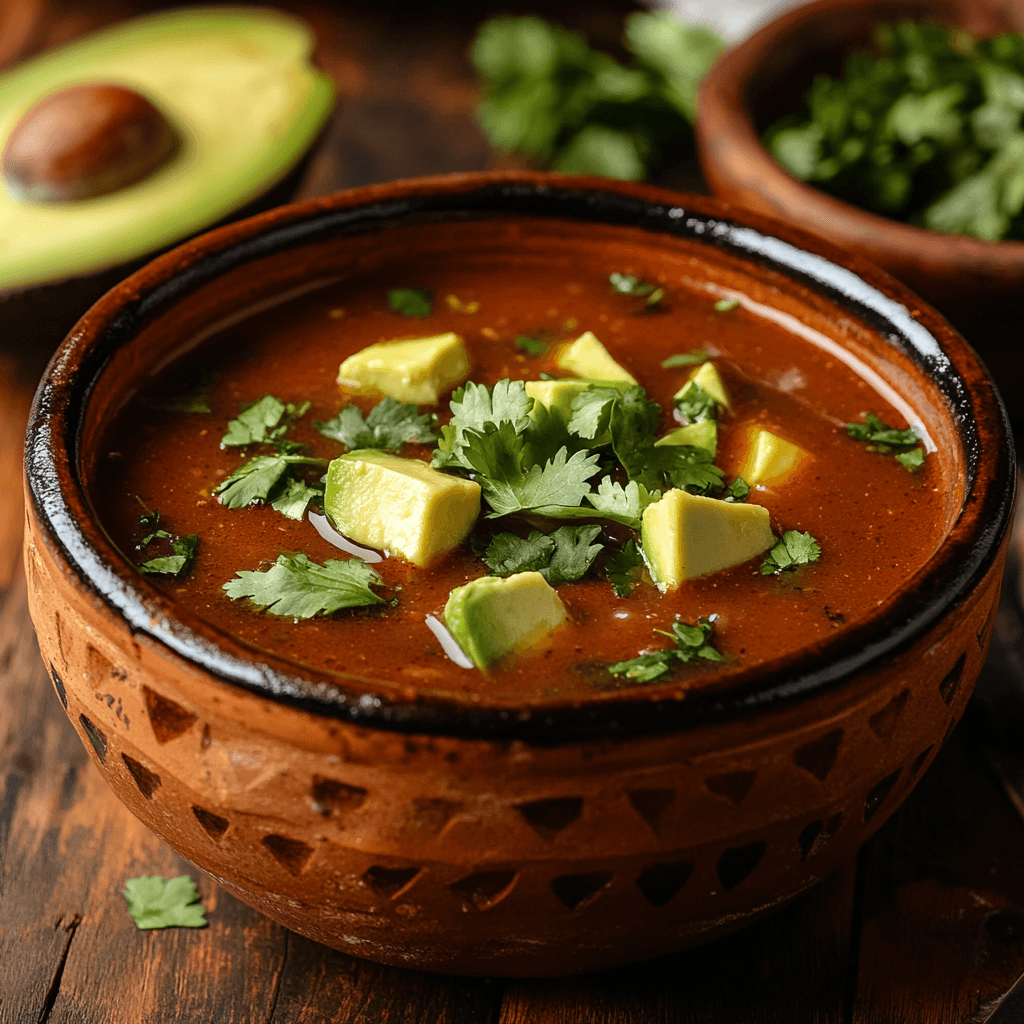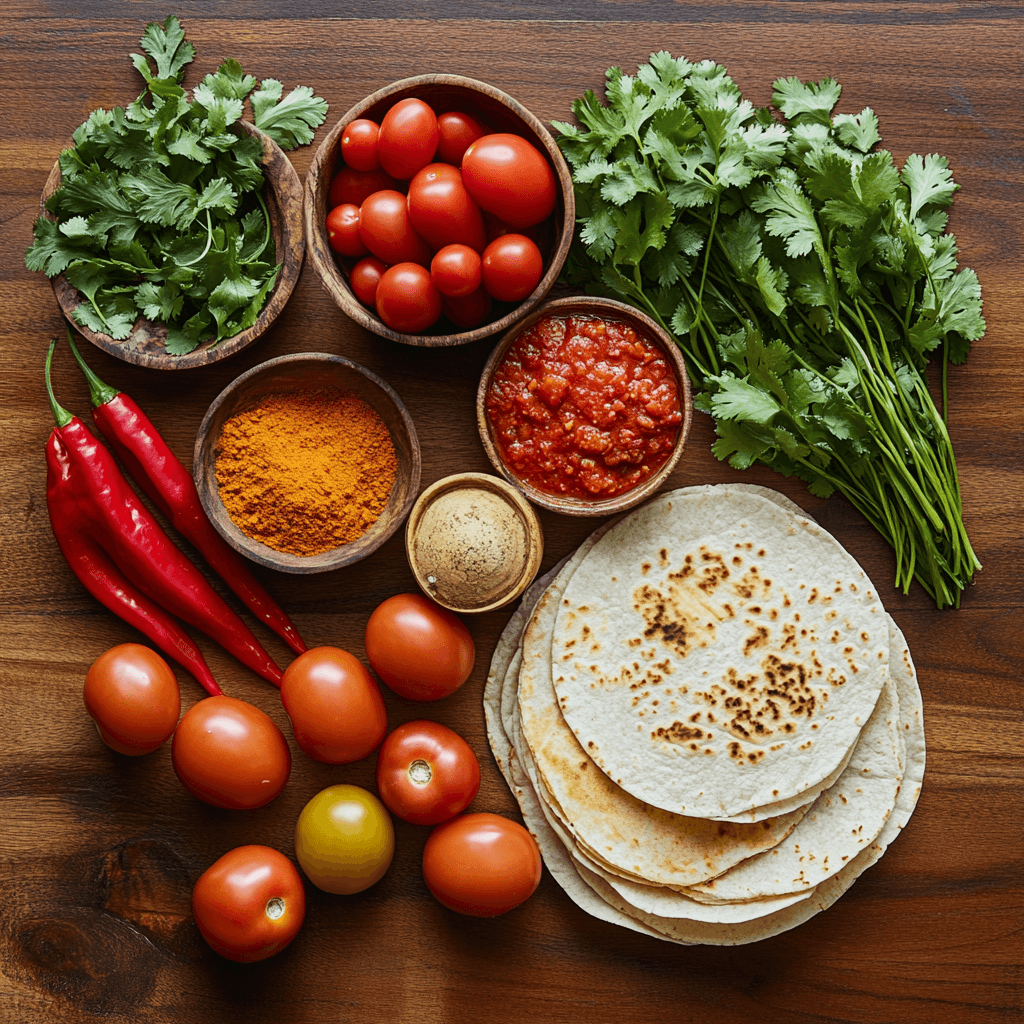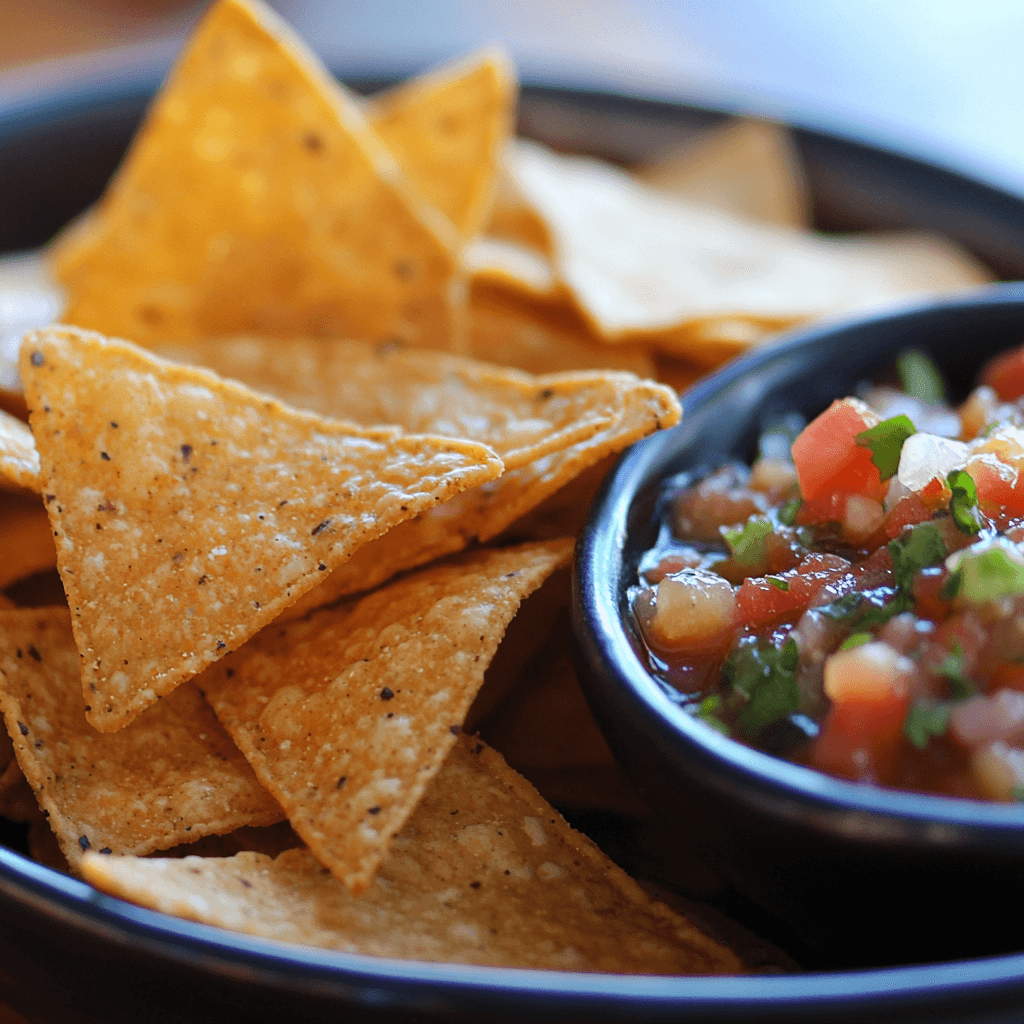Sopa Tarasca stands as a classic representative of Mexican cuisine, known for its rich flavors and comforting warmth. Originating from the Tarascan region in Mexico, this dish combines a delightful medley of ingredients, making it beloved by locals and food enthusiasts alike. This article will unveil the secrets behind Sopa Tarasca, highlighting the essential ingredients that contribute to its unique taste, its cultural significance, and a step-by-step guide for preparing this warming soup at home. By the end, you’ll understand why Sopa Tarasca deserves a place in your kitchen.
What is in Sopa Tarasca?
The essence of Sopa Tarasca lies in its carefully selected ingredients. Understanding these components will deepen your appreciation for this dish and enhance your cooking experience. The core ingredients include:
- Tortillas: Fried or toasted tortillas serve as a base, adding a delightful texture and flavor. They help thicken the soup while offering authenticity to the dish. You can use corn or flour tortillas, but traditional recipes primarily use corn. When you fry them until crispy, they create a wonderful contrast against the broth.
Tomatoes: Fresh tomatoes lend sweetness and acidity, balancing the richness. The vibrant flavor creates a symphony that characterizes this dish. For an added twist, consider using fire-roasted tomatoes or even sundried tomatoes for depth.
Chilies: Usually, a combination of dried chilies, like pasilla or guajillo, is used. These add warmth and character without overpowering the soup. When preparing, always adjust the type and quantity of chilies based on your spice tolerance.
Chicken or Vegetable Broth: The choice of broth supports the overall flavor profile. A good, homemade broth ensures the soup is hearty and fulfilling. For a vegetarian option, a rich vegetable broth works perfectly.
Incorporating these ingredients allows you to recreate an authentic taste of Sopa Tarasca. Each item offers layers of flavor that make this dish an experience in itself, blending textures and warmth in every serving.

Ingredients List
To prepare Sopa Tarasca, you will need the following ingredients. Below is a table summarizing the essential components for your cooking adventure:
| Ingredient | Amount | Notes |
|---|---|---|
| Tortillas | 4-6 | Cut into strips or triangles. |
| Fresh tomatoes | 4-5 | Chopped or blended. |
| Dried chilies | 2-4 (to taste) | Pasilla or guajillo recommended. |
| Broth | 4-6 cups | Chicken or vegetable broth. |
| Garlic | 2-3 cloves | Minced for flavor. |
| Onion | 1 medium | Chopped finely. |
| Avocado | 1 medium | Sliced for garnish. |
| Cilantro | To taste | Chopped for garnish. |
| Cheese (Queso Fresco) | 1 cup | Crumbled for serving. |
Table of Contents
Equipped with these ingredients, you’re ready to embark on your cooking journey!
When preparing Sopa Tarasca, fresh ingredients are key. Always select ripe tomatoes and good-quality dried chilies to maximize flavor. Additionally, if you’re new to cooking with chilies, start with a small quantity and gradually add more to fit your heat preference. This will ensure that you can enjoy the delicious flavors without overwhelming your taste buds.
Preparing Sopa Tarasca
Cooking Sopa Tarasca is a straightforward process that encapsulates the hustle and bustle of everyday Mexican life. Below are detailed, actionable steps to guide you through the preparation:
- Soak the Dried Chilies: Begin by removing the stems and seeds from the dried chilies. Soak them in hot water for about 10-15 minutes until they soften. This process helps to extract their flavors and make them easier to blend. Notably, soaking the chilies not only softens them but also releases their unique flavors into the broth.
Blend the Base: In a blender, combine the soaked chilies, chopped tomatoes, garlic, and about a cup of broth. Blend until you obtain a smooth consistency. This will serve as the flavorful base for your soup. For even more complexity, consider adding a small piece of onion or a pinch of cumin when blending.
Sauté the Aromatics: In a large pot, heat some oil over medium heat. Add the chopped onion and sauté until they turn translucent. This step builds flavor by releasing the natural sugars in the onion. Furthermore, this aromatic base is a crucial starting point that enhances the soup’s overall taste.
Add the Blended Mixture: Pour the blended tomato and chili mixture into the pot, stirring for a few minutes. This allows the flavors to meld together and intensify. Letting it combine fully is essential, as this creates the rich depth of flavor characteristic of Sopa Tarasca.
Incorporate the Broth: Gradually add the remaining broth to the pot, adjusting according to the desired soup consistency. Allow the mixture to simmer for about 20-30 minutes, letting the flavors develop. It’s important to mix occasionally to ensure that nothing sticks to the bottom of the pot.
Prepare the Tortillas: In a separate pan, lightly fry the tortilla strips until they turn golden and crispy. This step adds a delightful crunch to your soup. You can opt to bake or air-fry them for a healthier alternative.
Serve: Ladle the soup into bowls, topping each serving with crispy tortilla strips, slices of avocado, crumbled cheese, and fresh cilantro. Consider serving with lime wedges on the side for an extra burst of flavor.
By following these steps, you create a comforting bowl of Sopa Tarasca that encapsulates the warmth of Mexican culture. Each spoonful resonates with the love and care of traditional cooking. For best results, let the finished soup rest for a few minutes before serving, allowing the flavors to deepen even further.

What is the Meaning of Sopa Tarasca?
Sopa Tarasca is more than just a dish; it embodies a rich cultural history that is deeply intertwined with the Tarascan people. The term “sopa” simply means “soup” in Spanish. However, Sopa Tarasca has unique roots in the P’urhépecha culture of Michoacán, Mexico. In fact, the soup has been a staple in this region for centuries, passed down through generations.
Historically, this soup reflects the abundance of local ingredients and traditional cooking methods. It highlights not only the flavors of the region but also the customs surrounding its preparation. Families enjoy Sopa Tarasca together, often gathering around the dining table to share stories and create memories. This communal aspect is significant, fostering relationships and promoting cultural heritage. For example, many families would prepare Sopa Tarasca during significant celebrations or gatherings, marking special occasions with its comforting presence.
For those interested in exploring more about Tarascan traditions, local markets often feature seasonal ingredients specific to the region, enhancing the Sopa Tarasca experience. Seeking out these fresh offerings can transform your homemade soup into a more authentic dish that speaks to its cultural origins.
What Does Sopa Mean in Mexico?
In the context of Mexican cuisine, “sopa” can refer to various types of soups, often differentiated by their preparation, ingredients, and regional variations. Generally, “sopa” denotes a broader category that includes everything from light broths to hearty, chunky soups. When exploring these dishes, it is enlightening to notice how keenly they reflect local customs, historical influences, and the availability of ingredients.
For example, while Sopa Tarasca is a rich and substantial soup, other varieties, such as “sopa de fideo” (noodle soup) or “sopa de lima” (lime soup), offer different textures and flavors. Each region in Mexico boasts its own traditions, which shape how various soups are enjoyed and celebrated.
Understanding these distinctions enriches your appreciation of Mexican cuisine. If you’re looking to expand your knowledge, I recommend trying different types of soups from various regions. Engaging in this exploration will broaden your dining experience and deepen your connection to the diverse food culture that exists in Mexico.
What is the Difference Between Caldo and Sopa?
Understanding the terminology in Mexican cuisine offers a glimpse into the country’s rich culinary landscape. While often used interchangeably, “caldo” and “sopa” have distinct meanings that refer to different types of liquid-based dishes.
Caldo
The term “caldo” refers specifically to broth or a clear soup. It’s generally lighter than “sopa” and focuses on one primary ingredient, such as chicken or fish, along with some vegetables. Caldos are comforting in their simplicity, often served as a first course or during illness to soothe the palate. For instance, many families turn to caldo when someone is feeling under the weather, as it’s both refreshing and nourishing.
Sopa
On the other hand, “sopa” usually indicates a richer, thicker composition, often incorporating ingredients like grains, beans, or pasta alongside various proteins. Sopa Tarasca exemplifies this, with its hearty tortilla base and robust flavors.
One could liken caldo to a gentle embrace and sopa to a full-bodied hug: both are comforting yet distinct experiences. To illustrate further, in colder months, many people prefer to make a sopa for dinner, filling their homes with warmth, whereas caldo serves as a lighter option.
Understanding these differences not only enhances your culinary vocabulary but also helps you navigate the vast array of delicious offerings from Mexican kitchens. When you grasp these concepts, you’re better prepared to appreciate the nuances of each dish when you dine out or prepare meals at home.

As we explore the nuances of Sopa Tarasca and its cultural significance, we can see how such dishes create bridges between people and traditions. From its humble ingredients to the rich history behind its preparation, this soup represents a unity of flavors that nourish both body and soul. The next section will further delve into practical tips for making Sopa Tarasca and address common queries that arise for those looking to perfect this dish.
markdown
How to Make Sopa Tarasca Step-by-Step (continued)
Let us resume where we left off, diving deeper into the cooking process to enrich your understanding of how to create the perfect Sopa Tarasca. Follow these steps closely to ensure your dish bursts with authentic flavors and aromas.
8. Add Your Chosen Proteins or Vegetables
As your broth approaches readiness, it’s time to add proteins or vegetables. For a traditional version, shredded chicken is the ideal choice. It adds a heartiness that complements the robust flavors in the soup. Alternatively, for a vegetarian option, consider adding cubed zucchini, diced bell peppers, or mushrooms. These vegetables not only provide texture but also absorb the flavors of the broth beautifully.
When using chicken, ensure it is pre-cooked for convenience. You might also use rotisserie chicken to save time. In this case, shred the meat using two forks and mix it gently into the soup. Stir well, allowing the proteins to heat thoroughly.
9. Adjusting the Seasonings and Flavor Profile
After adding your proteins, you should assess the flavor. Take a spoonful of your soup and taste it. At this stage, you may wish to adjust the seasonings. Often, a sprinkle of salt and pepper does the trick, but consider adding lime juice for brightness. The acidity cuts through the richness of the soup, balancing flavors efficiently.
Additionally, you could introduce other elements such as smoked paprika for a hint of earthiness or a touch of cumin for a warm, spicy note. While customizing, remember that the goal is to achieve harmony among the flavors rather than overpower any particular ingredient.

10. Letting It Simmer Together
Once you have adjusted the seasonings, allow your Sopa Tarasca to simmer for an additional ten to fifteen minutes. This resting period is crucial as it gives the flavors time to meld completely. During this time, you can prepare any garnishes you plan to use, elevating the soup’s presentation and flavor profile.
Simmering not only deepens the flavors but also enhances the overall mouthfeel of the soup. As it simmers, the aromas will fill your kitchen, inviting everyone to gather around the table.
11. Garnishing and Preparing to Serve
After the simmering period, it’s time to serve this delicious creation. Start by ladling the soup into bowls. Now, the toppings play a critical role! Top each serving with crispy tortilla strips, which add a satisfying crunch. Then, include slices of creamy avocado. The rich texture of the avocado beautifully offsets the soup’s spiciness, creating a delightful contrast.
For a finishing touch, sprinkle crumbled queso fresco over the top, followed by a handful of freshly chopped cilantro. These vibrant garnishes not only enhance the flavor but also add an appealing presentation to your bowl of Sopa Tarasca.
12. Enjoying the Meal
To appreciate your Sopa Tarasca fully, it’s best enjoyed with family and friends. As you sit down to eat, consider sharing stories or experiences while you savor your delicious creation. Each spoonful is an invitation to indulge in the flavors and warmth of Mexican culture. The communal aspect of sharing meals is essential; it fosters connections and creates lasting memories.
You might want to serve alongside lime wedges so that each diner can add a zesty kick according to their preference. This personal customization adds an interactive element to the dining experience.
Pro Tips & Variations for Sopa Tarasca
Enhancing Your Sopa Tarasca
To ensure your Sopa Tarasca reaches its fullest potential, here are several actionable tips to follow:
- Use Fresh Ingredients: Choose the freshest tomatoes, herbs, and chilies for optimal flavor. Freshness significantly enhances the overall taste of your dish, making it hearty and flavorful. When selecting tomatoes, go for those that are firm and fragrant, indicating ripeness.
Adjusting Spice Levels: If you love heat, consider adding jalapeños or even a dash of cayenne pepper. Conversely, if you prefer milder flavors, you can limit the chili quantity or choose milder varieties for a softer touch.
For instance, a common practice is to start with milder chilies and taste test until you reach the desired heat level. This method allows for a personalized touch that caters directly to your spice tolerance.
Creative Variations for Sopa Tarasca
One of the joys of cooking is experimentation. Feel free to get creative with Sopa Tarasca:
- Different Proteins: While chicken is traditional, you could substitute it with shrimp or even tofu as a plant-based option. Tofu, when marinated properly, can soak up the flavors of the broth beautifully, making it an excellent addition.
Unique Flavor Profiles: You can introduce different spices such as oregano or bay leaves to impart new dimensions to the taste. Additionally, considering local ingredients can inspire new variations tailored to specific seasons.
Serving Suggestions: Besides traditional garnishes, you can serve it with fan-favorite tacos al pastor or some fresh corn bread on the side to soak up the delightful broth. Each accompaniment can transform the meal into a delightful feast.
FAQs About Sopa Tarasca
What is in Sopa Tarasca?
Sopa Tarasca is composed of fried tortilla strips, fresh tomatoes, assorted chilies, garlic, onion, chicken or vegetable broth, and garnishes like avocado and cheese. Each ingredient brings its own distinct flavor, creating a rich and comforting soup.
What is the meaning of Sopa Tarasca?
Sopa Tarasca reflects its origin from the Tarascan region in Michoacán, Mexico. It signifies a hearty soup that represents local culinary traditions, culminating in a delicious, communal dish. Its name connects it to the rich history and culture of the P’urhépecha people.
What does sopa mean in Mexico?
In Mexico, “sopa” translates to “soup” in English. This term encompasses a variety of liquid-based dishes, ranging from clear broths to thick, hearty soups. Each region of Mexico has its interpretations of “sopa,” resulting in a rich diversity of recipes.
What is the difference between caldo and sopa?
While “caldo” refers to a clearer broth that primarily highlights one ingredient, typically chicken or pork, “sopa” implies a thicker soup filled with diverse ingredients such as beans, grains, and proteins, much like Sopa Tarasca. Thus, Sopa Tarasca is categorized as a “sopa” due to its robust texture and variety of flavors.
Can I make Sopa Tarasca ahead of time?
Absolutely! You can prepare Sopa Tarasca a day in advance. However, keep the garnishes, like cheese and crispy tortilla strips, separate until you’re ready to serve. This will prevent them from getting soggy, thus maintaining the soup’s desired textures.
Can I freeze Sopa Tarasca?
Yes, but it is best to freeze the soup without garnishes. After cooking, allow it to cool before transferring it to an airtight container. When ready to enjoy, defrost and reheat, adding fresh toppings for an optimal experience.
What can I use as a substitute for cheese in Sopa Tarasca?
For those seeking a dairy-free or vegan option, cashew cream or nutritional yeast can serve as excellent alternatives. Both offer a creamy mouthfeel and add a rich flavor that can complement the soup beautifully.
How can I adjust the spice level of Sopa Tarasca?
To adjust the spiciness, modify the type and amount of dried chilies. Starting with milder varieties or reducing the quantity ensures that you retain the wonderful flavors while catering to your palate.
Conclusion
Sopa Tarasca, with its delightful blend of flavors and textures, is more than just a recipe; it is a celebration of Mexican culture. As you embrace the cooking process, you not only create a hearty meal but also connect with a rich tradition that brings people together. By following the steps and tips provided, along with creative variations, you can craft a delicious bowl of this iconic dish. Ultimately, Sopa Tarasca invites you and your loved ones to share stories and enjoy the simple, profound joy that food brings into our lives.


